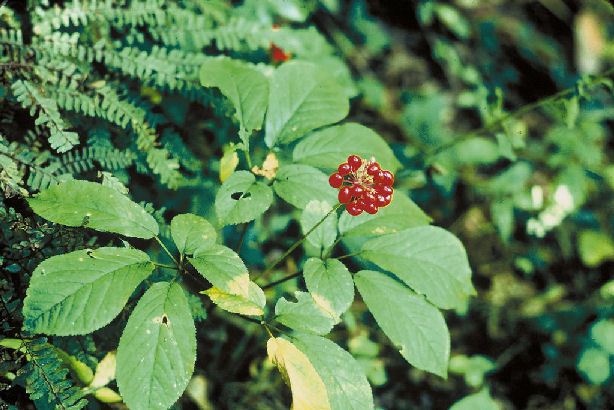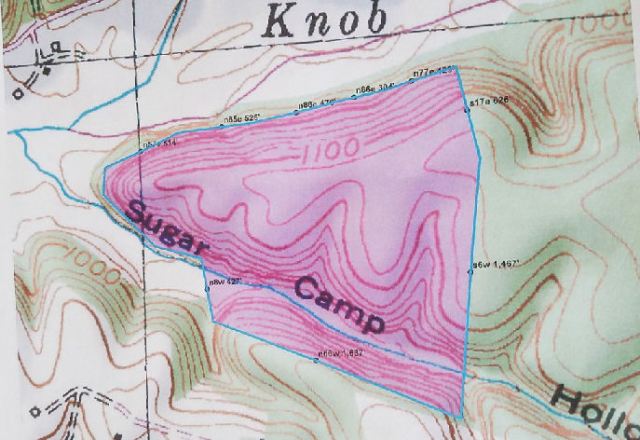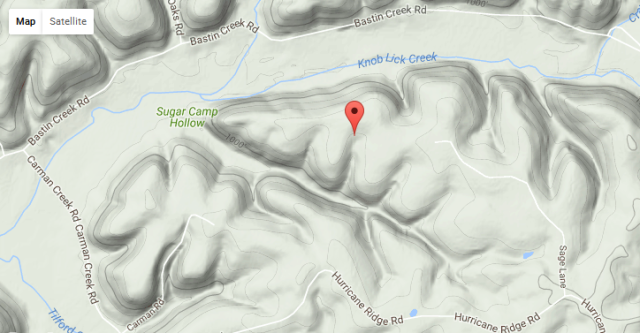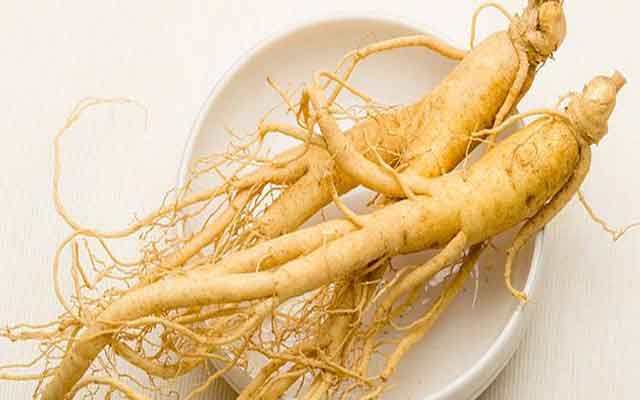Ginseng and China
Let’s say you’re living in Kentucky (near Frankfort), married with 3 boys, four, six and seven years old. You’re working as a janitor making $34k (take home) but there’s a nice health care plan. You want your wife to quit working, homeschool the boys and have a few more babies. She loves that idea but can’t see how to afford it because even with both parents working you can barely make ends meet. And what about the children? How could you ever afford to send them to college?
If one looked around carefully it would be possible to find something along the lines of a 40 acre parcel of land 20-30 miles outside of town for less than $1500 an acre. Typically these properties only have about 15 acres are even close to flat and the rest is hillside covered with ‘young timber’. That means it will be 30 years before the timber is worth anything, so for now it’s considered hunting land. Just to be sure, as of today (April 2017) a search for land was done in central Kentucky and several parcels from 40-75 acres were found that were priced at less than $1000 per acre.
The purpose of finding a farm like this is three-fold. First, you need enough land to have a farm where you can produce most of your food and almost all your high-value food. Second, having such a farm means you can arrange things the way you want them without having to worry about what the neighbors think. Third, such a parcel of land offers the correct habitat to grow ginseng.
Wild ginseng is almost extinct and when planted as “wild simulated” ginseng there is no difference between the wild and the wild simulated because all the planter did was help out nature by planting the seed. The price of wild ginseng has risen dramatically in recent years and has regularly been selling for over $1000 per pound of dried weight. The market for ginseng is China and it’s always been China. There is no reason to expect the price of ginseng to drop or the demand to dry up.
Ginseng is a business with an increasing demand and a declining supply.
Each acre, planted correctly, will yield about 200 pounds (dried weight) of 10 year old roots. By law, in order to comply with the international treaties governing endangered species, ginseng cannot be harvested before it’s 5 years old. However, after 5 years the roots can be dug out of the ground. The older the roots the bigger they are and the more valuable they are. If necessary roots could be dug to provide money every fall after the plants are 5 years old, but it’s far better to leave them in the ground to grow.
So, the idea is to find a place that will support all these requirements because once it’s planted it’s almost completely maintenance free.
An Example Of What To Look For
Of these, we’ll focus on one of the properties on sale now, a 74.15 acre parcel with an asking price of $65,000. That’s the asking price for the land, $875 per acre. I don’t know how long that listing will be up so the link is to the archived page. The price is excellent, but let’s look at why it’s a good deal. Because even at $850 an acre, the land might be completely unsuitable. This property is actually a very good option from what an be seen online.
What you can see from this property is that there are two sections of north-facing hillside that would be excellent for growing ginseng. This is a satellite view:
The ridge-top land can (and should) be cleared to create productive pasture land. That would probably come out to around 30 acres and a good bulldozer operator should be able to knock out clearing out the trees and some of the stumps in a week or so, running at $400 to $600 per day. To give you an idea of the lay of the land, this is more of a terrain photo from satellite imagery:
Just below that balloon, there is a good location to put in a large pond (lake) of 3-5 acres. The biggest problem in that part of the country is water. The ground is hydraulically tight and getting a water well is almost impossible. Putting in a good-sized lake would ensure that the farm had an adequate supply of water and after that it’s a matter of pumping it to where you want it.
This property is better than most when it comes to good land for growing ginseng because there’s at least ten acres of excellent terrain and perhaps another ten acres of terrain that would work but isn’t as good.
A very nice 2000 sq. ft. 4BR 3BA earth-sheltered (“underground”) house can be built for $30 to $35 a square foot ($60k – $70k). Monthly utilities would average around $100 per month. No TV, no cable, just internet and phone. The home can be designed to include steel that make it tornado proof. Along with a few other features, it’s a very secure, defensible home and the utility savings compared to normal homes is over half the mortgage payment. Best of all? Farm housing is exempt from the building code. You have a farm, it’s rural and it’s exempt from the building code so build the home any way you like it.
Combine that with a full-blown homesteading operation and plan on an 80% savings in food costs by producing your own veggies, meat and dairy products. Flour, rice, beans, spices, condiments and such are cheap.
Put the land into production and specialize only in items in demand locally in order to sell better, organic food at a lower price than the Tysons/Con Agra stuff in the local supermarket. And in most states, on-farm sales are exempt from sales taxes. Kentucky is one of them. Keeping costs low, the mortgage can be paid off quickly because the farm chores only take up two to three hours a day, which leaves plenty of time for full-time employment.
Plant 10 acres of wild simulated ginseng and after 5 years start harvesting seeds, which are worth $150 per pound. Let’s say you get 10 pounds per acre each year and sell them. There’s another $15k in income every year, or keep planting your own land if it will support ginseng. Start harvesting in year 10 and pull out as much as needed at $1000 per pound to pay for the following year plus have another $15k in cash for immediate emergencies. With that done, quit the day job and start scouting for farms for the sons. Buy each son a farm about 5 years before they’re ready to leave home and help him plant ginseng on it.
By the time the 20 year mark hits, there should still be at least 5 of the original acres left. 20+ year old ginseng roots are extremely valuable and rare. Ginseng is like money in the bank locked up in a 1-year CD that the government can’t steal.
This plan offers more opportunity to generate wealth with less risk than sending a kid to college and then out to find a job. Buying farms for sons when they’re 14-15, they get started with their own farm early. Plant the ginseng first, move him to the farm at 18-19 to get it into production. Live the first few years in a super-insulated cottage (can be an office later) and when he’s 24-27 years old he can pull out enough to build a home, be self employed and arguably have a net worth of several million dollars. Country girls looking at the farm, the debt-free home and the lifestyle it offers might be interested. At some point she’d find out about the ginseng, either before he marries her or after, because there’s no way a wife won’t find out about it.
Has he set himself up for divorce because he’s worth too much for the marriage to last? After all, women most often tend to frivorce their husbands when they’re young. Or should he make a big production of planting a new patch of ginseng in a different location, explaining that it would pay for the kids college and fund their retirement in 10 to 15 years. Presumably she would stick around for the maximum payout, right? If things start looking bad he can liquidate the old stuff as fast as he can and be in a position to hire a really good attorney.
There’s always the poison pill approach too: tell her that if she ever files for divorce, files false charges against him or anything like that, somebody will wander through that ginseng with a sprayer full of weed-killer and a few million dollars worth of ginseng will go poof.
I know of no other long-term investment that offers such excellent returns in such a short period of time and facilitates a rural, healthy and independent lifestyle than growing ginseng.









6 thoughts on “Alternate Investments For Alternative Lifestyles”